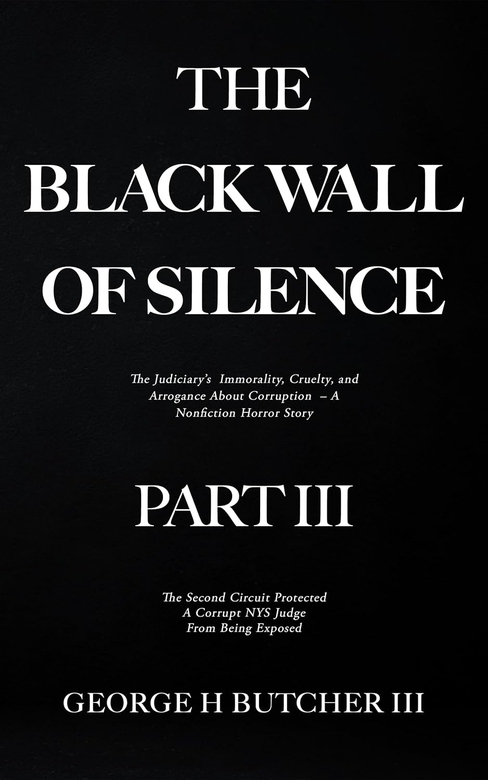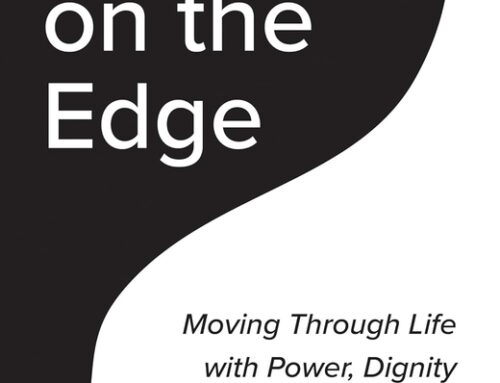
In this third compelling section of George H. Butcher III’s The Black Wall of Silence series, readers are led from the macro issues of judicial impunity in previous installments to the micro level of a number of interlinked and particularly egregious cases in New York state. Examining specific judicial “conduct related to corruption” and utilizing an analytical approach to assess key decisions made by state, federal, and appellate court judges, this book is a methodical and relentless takedown of these “judicial monsters in a real-life horror story.”
While the previous two books in this three-part series addressed many of the big-picture issues with judicial corruption at the highest levels, this book focuses on the author’s own experience with four federal district and appellate court judges in the handling of his own case, which gives some motive to the series on the whole. Strongly believing that due process was undermined for unconstitutional purposes, Butcher outlines his case that a NY state judge engaged in a conspiracy with two other private actors to subvert the process of justice and “deprive the plaintiff of property without due process of law,” which totaled over $1 million.
Citing established court precedent and dozens of examples of concerted actions/agreements between conspiratorial parties at every level, Butcher lays out a damning case against the judiciary, as well as the peripheral mechanisms of the judicial system that ensure ongoing impunity. Again, as with other installments, the seriousness of the author’s claims and the intensity of his arguments are occasionally weakened by lapses in editing and formality, from emotionally charged subtitles to relying on subjective perspectives and experiences. The writing is primarily composed of formal legal language, based in facts and established law, but when emotion and personality bleed into Butcher’s case, it lessens the impact.
Additionally, for readers unfamiliar with the nuances of the legal system, some of the meticulous dives into the procedural details of this particular case may be less engaging than a study of the judicial system writ large, and there are certain fallacies and suppositions throughout the text that don’t feel adequately supported. With this installment, the author gets to the crux of why he’s embarked on this lengthy takedown of the judicial establishment, and at times it can make the entire effort seem more like a personal vendetta than a righteous pursuit of justice. That said, the reality is that judicial corruption impacts countless lives and cases around the country, so the core thesis remains powerful, sobering, and important.
On a technical note, there is a good deal of redundancy in both explanation and accusation; if readers have read the first two tomes, they will be familiar with the author’s perspective and opinions, so multiple reiterations are unnecessary. At the same time, the presented evidence can be difficult to parse or fully comprehend, particularly with so many layers of illegality, including dishonest actions taken to hide both individual and collective acts of ongoing corruption, and this could have been more clearly outlined. In other words, the treatise can be simultaneously too subjective and overly academic, which makes for a more uneven thesis than the first two installments.
Despite these critiques, the author’s stated purpose of engaging and maintaining public outrage to increase judicial accountability is a necessary one, and one that is furthered commendably in this deeply researched and passionate work of political investigation.
Book Links
STAR RATING
Design
Content
Editing
Get an Editorial Review | Get Amazon Sales & Reviews | Get Edited | Get Beta Readers | Enter the SPR Book Awards | Other Marketing Services























Leave A Comment